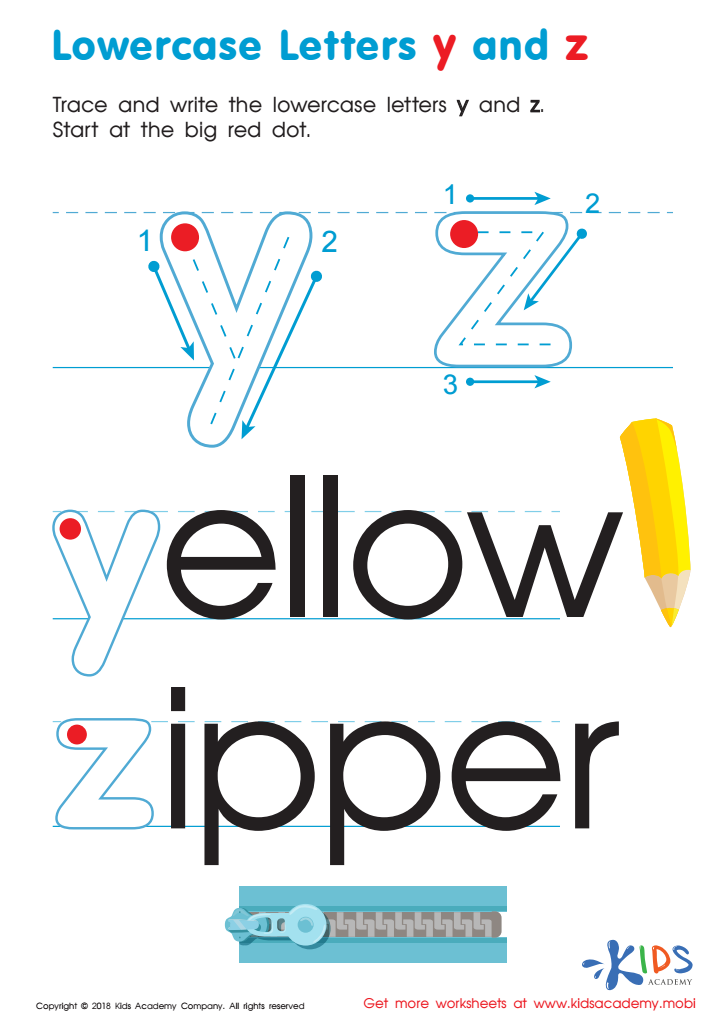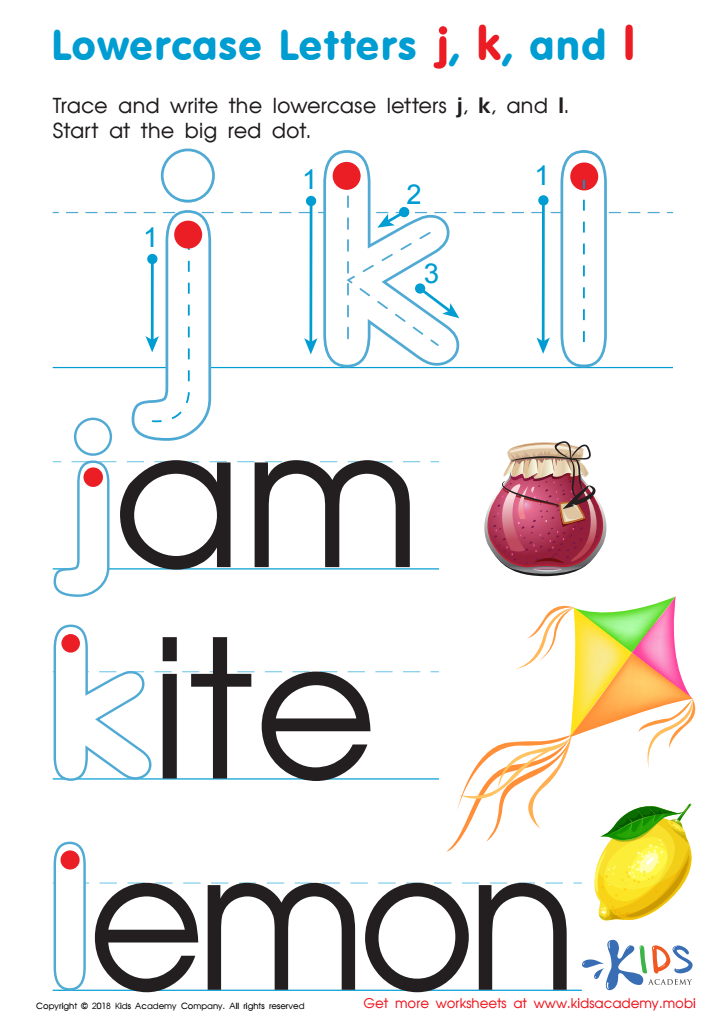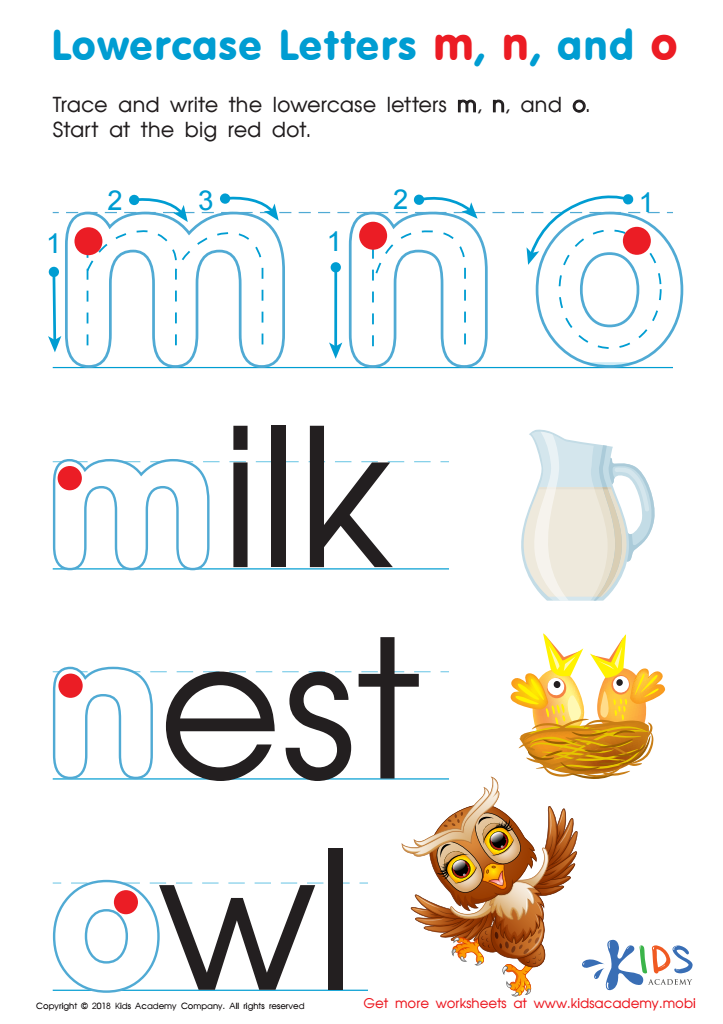Lowercase letter writing Normal Tracing Letters Worksheets for Ages 4-9
3 filtered results
-
From - To
Discover our engaging Lowercase Letter Writing Normal Tracing Worksheets, specially designed for children ages 4-9. These printable worksheets provide a fun and interactive way for young learners to practice their handwriting skills. Each page features beautifully designed lowercase letters that children can trace, helping them improve their grip and familiarize themselves with letter formation. Ideal for preschoolers and early grade students, our worksheets promote confidence in writing while enhancing fine motor skills. Encourage your child's learning journey with our user-friendly resources, perfect for home, school, or enrichment activities. Start boosting your child’s writing skills today!


Lowercase Letters y z Worksheet


Lowercase Letters j k l Worksheet


Lowercase Letters m n o Worksheet
Parents and teachers should prioritize lowercase letter writing and normal tracing for children aged 4-9 as it lays the foundation for effective communication and literacy skills. Mastering lowercase letters is essential since they are used in everyday writing, such as notes and texts, and they comprise the majority of print encountered in books, handouts, and other media.
Tracing activities help enhance fine motor skills, promote hand-eye coordination, and develop proprioceptive awareness, which are vital for future writing tasks. These early experiences with letter formation also support cognitive development, as children learn to recognize letter shapes and sounds, reinforces phonemic awareness, and boosts handwriting speed and fluency.
Moreover, engaging in lowercase letter writing helps boost children's confidence and motivation in literacy activities. As they see improvement in their writing abilities, they are more likely to read and write independently, which further reinforces their language skills.
By investing time in practicing lowercase tracing, parents and teachers can nurture a love for writing and learning, setting children up for long-term academic success. In essence, this foundational skill is not just about writing—it is about building the frameworks for effective communication in life.
 Assign to My Students
Assign to My Students














